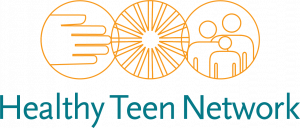During this session, participants will develop a basic understanding of conception and the stages of pregnancy, and learn about medical and legal details of pregnancy options including Parenting, Adoption and Abortion. They will also complete a values reflection activity designed to help them identify areas of bias or potential conflict in their discussions of pregnancy options with the community.
Training Hub
The Sex Education Collaborative Training Hub lists trainings for sex educators, facilitators, and other professionals on best practices for sharing important information with clients and the public. From teaching anatomy inclusively to effectively addressing bias in the classroom to addressing racial justice and equity in sex education, the Training Hub includes trainings, technical assistance, and policy support from state, regional, and national leaders in the field of sex education.
Please note: The Training Hub includes both in-person and online professional trainings. If you see a training you are interested in and it isn’t listed as virtual, please reach out directly to any of our members to find out what's possible!
Trainings Offered by State-Based and National Organizations
Displaying results 51 - 55 of 137Understanding Pregnancy Options
- Indicator 1 (6-12): Explain fertilization, implantation, conception, and how pregnancy occurs.
- Indicator 3 (6-12): Describe the differences in mechanisms of action and access between emergency contraception and the abortion pill.
- Indicator 5 (6-12): Describe pregnancy options, including parenting, adoption, and abortion.
- Indicator 6 (6-12): Identify three federal and/or state laws that impact young peoples’ access to effective reproductive and sexual health care (e.g. age of consent for services, confidential access to health care services, and access to condoms)
- Indicator 1 (K-12): Demonstrate three techniques to create an inclusive and affirming learning environment. (S)
- Indicator 1 (K-12): Describe the importance of teachers’ maintaining professional boundaries when teaching sex education.
- Indicator 4 (K-12): Demonstrate the use of inclusive and affirming language. (S)
- Indicator 1 (K-12): Explain three reasons why it is important to respond to every question students ask when teaching sex education.
- Indicator 2 (K-12): Demonstrate the ability to effectively respond to three different types of challenging questions. (S)
- Indicator 2 (K-12): Demonstrate the use of inclusive and affirming language. (S)
- Indicator 1 (K-12): Explain the differences between personal and universal values relating to sexuality.
- Indicator 2 (K-12): Describe how verbal and nonverbal expression of personal values, and comfort with topics related to sex education, could impact one’s teaching
- Indicator 3 (K-12): Explain the importance of educators refraining from sharing their personal values when implementing sex education.
- Indicator 4 (K-12): Demonstrate the ability to respond effectively to students’ values-based comments and questions. (S)
EASE Training
This training is designed to help people develop the skills to teach sex education to people with intellectual and developmental disabilities. It covers adapting materials for all learners, investigating your own values and biases, and can include information on how to deliver our EASE Curriculum. This training can be delivered in-person and virtually, either live or asynchronously.
By attending training with RSEI, participants also gain access to members-only content on our website, as well as up to 10 office hours sessions for 1:1 support from an RSEI educator. Learn more about the support services we offer here(link is external).
RSEI is committed to providing affordable professional development for our communities. If the cost is prohibitive, please fill out our scholarship request form here(link is external).
- Indicator 1 (K-12): Demonstrate three techniques to create an inclusive and affirming learning environment. (S)
- Indicator 2 (K-12): Demonstrate three student-centered instructional approaches that support a variety of learning styles. (S)
- Indicator 3 (K-12): Explain the differences between positive vs. shaming approaches to teaching sex education.
- Indicator 5 (K-12): Describe three effective strategies for practicing skills with students.
- Indicator 7 (K-12): Demonstrate the ability to analyze and tailor lesson plans to match the age, developmental stages, cultural backgrounds, and other identities of students. (S)
- Indicator 1 (K-12): Describe three health (e.g. physical, social and/or emotional) and/or academic benefits of sex education for young people
- Indicator 2 (K-12): Describe state and/or district laws, policies, and standards that relate to sex education where one teaches.
- Indicator 1 (K-12): Explain the differences between personal and universal values relating to sexuality.
- Indicator 2 (K-12): Describe how verbal and nonverbal expression of personal values, and comfort with topics related to sex education, could impact one’s teaching
- Indicator 3 (K-12): Explain the importance of educators refraining from sharing their personal values when implementing sex education.
- Indicator 4 (K-12): Demonstrate the ability to respond effectively to students’ values-based comments and questions. (S)
The Responsible Sex Education Institute at Planned Parenthood of the Rocky Mountains offers a variety of technical assistance, including support services like monthly webinars and blogs, and office hours. We can help schools/organizations select, customize, and/or develop a comprehensive sex education curriculum aligned with state standards and with an eye on best practices.
Navigating the Politics of Public Health: Finding Common Ground in Support of Adolescent Sexual and Reproductive Health
In this four-part recorded webinar series, participants will learn how to advocate in support of adolescent sexual and reproductive health with conservative-leaning policymakers and key stakeholders, including:
- strategies for knowing your audience to understand their background and perspective,
- opportunities for finding common ground to work toward a shared goal,
- leveraging the media to increase your public awareness, and
- tactics for identifying and cultivating key messengers and mobilizing your community.
A shifted landscape of new or strengthened power players (particularly, those who lean conservative) at all levels of government, combined with threats to public health investments that our nation’s youth are facing, necessitates a reinvigorated call to public policy action by individuals and organizations that support youth and their families. Build your capacity to navigate the politics of public health and find common ground in support of adolescent sexual and reproductive health.
- Indicator 6 (K-12): Describe three strategies for actively involving parents, caregivers, and other trusted adults in a sex education program.
- Indicator 1 (K-12): Describe three health (e.g. physical, social and/or emotional) and/or academic benefits of sex education for young people
SIECUS’ policy team brings to bear 55 years of research-based expertise on comprehensive sex education to ensure that public policies reflect best practices and current research in support of our nation’s young people. Our agenda is simple: SIECUS advances comprehensive sexuality education as a means of building a foundation for a long-term culture shift that will positively impact all levels of society, particularly issues of gender equity, sexuality, sexual and reproductive health, consent, personal safety, and autonomy. Through technical assistance to states, SIECUS’ staff support states in educating advocates and policymakers about providing rights-based sexuality information and education at the federal, state, and local levels and leading, strengthening, and developing partnerships with other organizations, coalitions, and initiatives to advance policies that promote positive sexual and reproductive health outcomes across the lifespan. Technical assistance is focused on meeting a state’s immediate needs in a timely way.
Additional Trainings offered by out-of-state organizations
- ‹ previous
- 45 of 49
- next ›
Trauma-Informed Sexual Health Education
We never know what traumas someone has experienced or what could trigger a trauma response for someone. As more and more research has come to show that many young people are experiencing high levels of trauma, it's essential that we work to create safer spaces for young people in schools. This includes ensuring that sex education will not become a re-traumatizing experience for survivors.This training will cover the basics of trauma, small “t” vs. big “T” trauma, and how Adverse Childhood Experiences (ACEs) can play a part in sex education.
- Indicator 1 (K-12): Demonstrate three techniques to create an inclusive and affirming learning environment. (S)
- Indicator 2 (K-12): Demonstrate three strategies for creating culturally responsive classrooms. (S)
- Indicator 3 (K-12): Describe three elements of a trauma-informed approach to sex education.
- Indicator 4 (K-12): Demonstrate three strategies of a trauma-informed approach to sex education (e.g. giving trigger warnings before content on sexual assault and allowing students the right to pass as appropriate, etc.). (S)
- Indicator 4 (K-12): Explain the roles and responsibilities of a mandated reporter.
- Indicator 5 (K-12): Explain the state- and district-mandated reporting requirements and procedures.
- Indicator 3 (K-12): Explain the differences between positive vs. shaming approaches to teaching sex education.
- Indicator 7 (K-12): Demonstrate the ability to analyze and tailor lesson plans to match the age, developmental stages, cultural backgrounds, and other identities of students. (S)
- Indicator 4 (K-12): Describe three strategies for incorporating the positive and negative impacts of communicating through technology into lessons on healthy relationships.
- Indicator 4 (K-12): Demonstrate the use of inclusive and affirming language. (S)
- Indicator 6 (K-12): Explain three ways that LGBQ+ youth are at disproportionate risk for health disparities.
- Indicator 8 (K-12): Explain why it is essential to include positive portrayals of LGBQ+ people in lessons.
- Indicator 2 (K-12): Describe state and/or district laws, policies, and standards that relate to sex education where one teaches.
- Indicator 2 (K-12): Describe how verbal and nonverbal expression of personal values, and comfort with topics related to sex education, could impact one’s teaching
- Indicator 3 (K-12): Explain the importance of educators refraining from sharing their personal values when implementing sex education.



